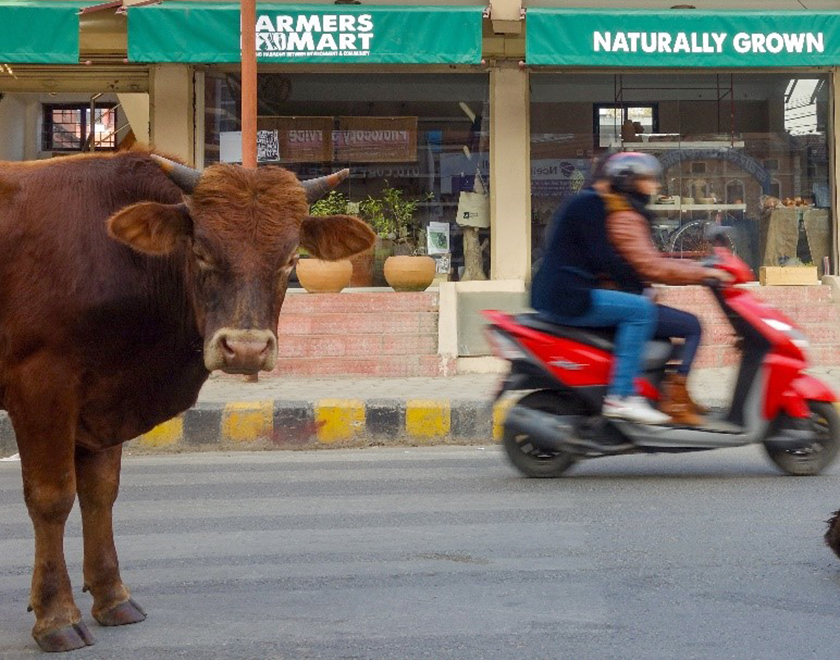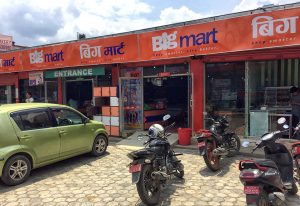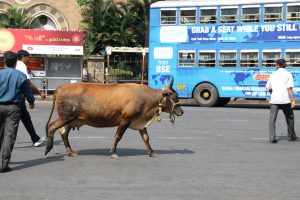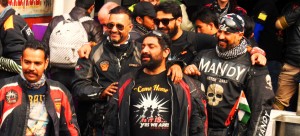
So much has already been written and so many photographs taken related to our national treasure–the wandering street cow– that I’m hesitant to add more to the literature. But last night, I was driving home along a major thoroughfare in Lalitpur, and I almost hit a huge black bull fast asleep in my lane.
Holy cow, that was close!
For the rest of the evening, all I could think about was Kathmandu’s street cows. Was it my imagination, or are there are more of them out there of late? Perhaps it’s just spring–with all that love in the dusty air; that would explain the larger number of moms with calves I’m seeing these days. But with those thoughts, I fall asleep counting cows.
When I woke up, I still had cows in my brain. All my life I’ve had a close connection with the cow as I grew up in Upstate New York, where the cow population was over a million. Every year at the Dutchess County Fair, several of my high-school friends would show off their prized heifers during the popular 4-H competition. All year long, these farmer pals of mine would wash, feed and groom their blue-ribbon hopeful almost obsessively, with the hope of winning a prize.
Being more of a city boy, I was often enlisted by my ‘friends with cows’ for entertainment value–to come out and help with the morning milking, or partake in a bit of cattle rustling, where we would pretend that we were cowboys on a ranch. I was a complete neophyte to farm work, and was often at the receiving end of many a joke. For example, I was once kicked on the behind by Bessy, an ornery old gal in black-and-white cow clothing.
So at an early age, I learned to both fear and revere the mighty cow, and give them the respect they so deserve.
I suppose my particular upbringing has something to do with my current love-hate relationship with the streets of Kathmandu. But wait, before you think that this kuire is setting to go off on a rant about the dismal state of Ktm city streets (like you don’t already know), fear not; I just want to say one thing: our sacred cows should not be there, sleeping in abandoned ditches and congregating on the Baghmati bridges.
For heaven’s sake, after 11,000 years of cultivating the Kathmandu Valley, isn’t our animal-welfare awareness higher than that? You can’t have 700 kg cows wander around traffic, and then expect to be fine in the afterlife (after you plow into one at high speed), can you?
No, you can’t, as local law states, you must go straight to afterlife prison for killing the goddess on the street.
So why, despite the fine municipal efforts by the Kathmandu Metropolitan City, along with a myriad of animal welfare groups like AnimalNepal, SPCAN, KAT and others working tirelessly on the problem, is Laxmi still munching her cud at the corner of Pulchowk and Durbar Tole?!?
Baffling, I know. Is it perhaps that we love her so much, that we need her there? After all, in our 9-to-5 loops between office and our urban home, where else do we get to see such wonderful wildlife, outside of the Saturday night Nat Geo airing of Animals Gone Wild.
It’s one of the things that I love-hate about Ktm streets. You get to see tribes of monkeys doing high acrobatics on live wires near most temples, and large packs of hungry dogs feeding on scraps all over the place, just as they did some 30,000 years ago (sans the angry shop owner throwing scalding water and shouting obscenities). And for at least 10,000 years now, we have all been watching the peaceful cow, lazily swat flies with her tail and poop all over the place, without much of a bother.
So why change now, you might ask? Because slamming an SUV onto a sleeping cow at 35 km/h is just not cool. Call me crazy!
Let me know if you agree (or disagree) in the comment box below…
Jigs Gaton is a quirky-kinda guy, hailing from America and happily living in Dhobighat with family, friends and a 40kg dog. He loves cows, with his second favorite Tihar day being Gai Tihar (first is Kukur Tihar).
























